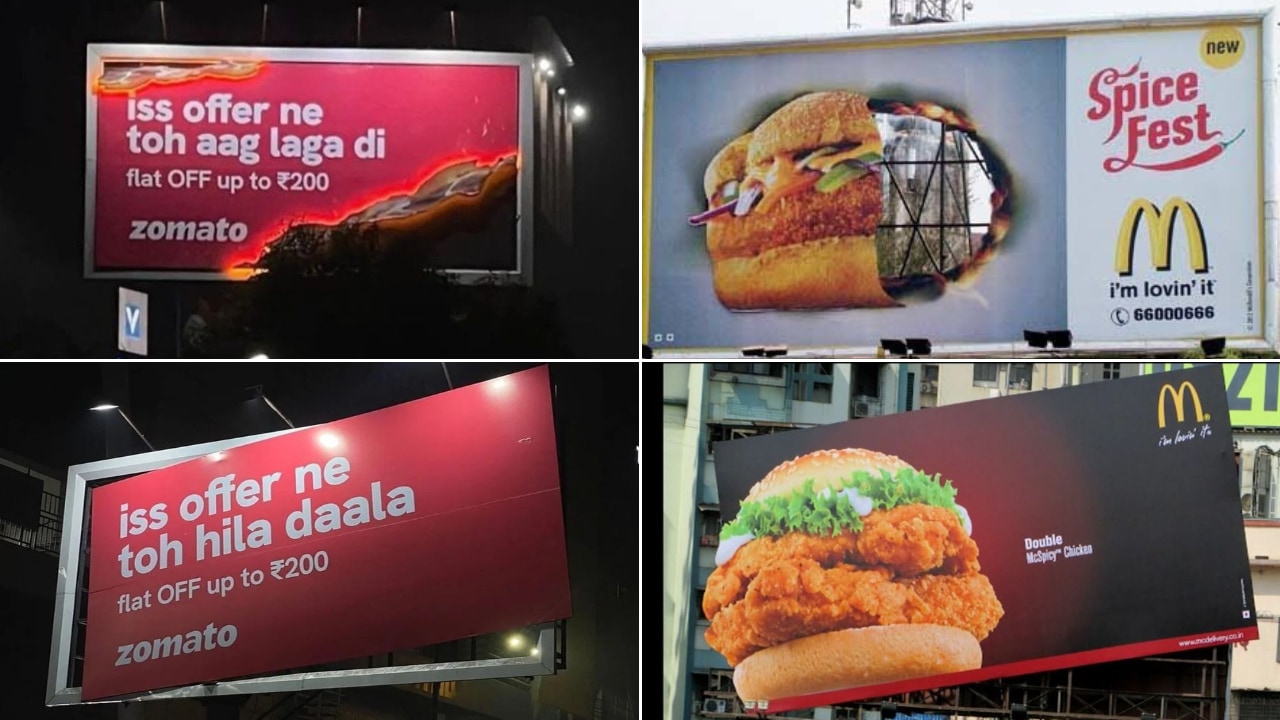Outdoor advertising has always had an experimental streak and has been a way for brands to have fun with their messaging in order to deliver and present it in a rather unique and distinctive manner to captivate target groups. A pioneer of outdoor advertising is the ever-popular fast food chain McDonald’s. Over the years, we’ve seen some of the best examples of guerrilla and outdoor advertising campaigns come from the creativity-packed house of McD’s. Be it a clever representation of the iconic Golden Arches, a cheeky one-liner about Ronald McDonald or a guerrilla-esque hoarding or a giant billboard that emits steam and the aroma of coffee.
Recently, we have seen other brands take on outdoor advertising in their own witty styles as well. Zomato for one, was freshly in the news for a collaborative outdoor ad campaign with Blinkit. The campaign was smart, funny and spiked a lot of interest. Many other brands jumped on the bandwagon to become a part of this campaign as well. Suffice to say, it was a hit! It turned into a huge trend with scores of other brands jumping in the mix with their own versions. Some were hits, but most missed.
Following suit, Zomato has just launched another independent outdoor ad campaign showcasing in a quirky way, the various attractive offers that it has in store for its customers. However, the response isn’t what one or Zomato would have expected. Many believe that Zomato may have copied a campaign that McDonald’s had launched almost a decade ago.
Suspicion is not without proof however. There does seem to be a rather remarkable resemblance between the two campaigns. The ‘burning hoarding’ and the ’tilting billboard’ concepts that Zomato has incorporated has been seen used by McDonald’s for their ‘SpiceFest’ campaign before.
Regarding this, an industry professional Ujjwal Anand took to LinkedIn to say, “Zomato’s burning, tilted and ‘phatta poster nikla offer’ outdoor execution is uncannily similar(to put it mildly) to the media innovation done by Milestone Brandcom (a Dentsu Network Out of Home specialist agency) for McDonald’s SpiceFest and Double Burger launch about a decade ago. Taking creative inspiration is fine, but definitely not without giving credit to the original creators. When it is the law of the land for music composers, lyricists, video footage or images, why not for media innovators and creators?”
Another professional who worked on the McDonald’s campaign said, “Had spent so much time talking about this campaign (McDonald’s) during pitches to our clients. Can’t believe today I’m seeing my favourite brand Zomato plagiarised the campaign done by my ex-agency. But, imitation is the greatest form of flattery!”
It is said that everything that had to have been invented, already has been. Everything we see today is an inspiration. Thus, taking creative inspiration in all forms is absolutely fine but not without awarding due credit where necessary. However, is there a line that one mustn’t cross when deriving inspiration? And where does one draw it? When does inspiration turn into plagiarism?
Having said that, in all likelihood, it is completely possible that Zomato has released this campaign unaware of the resemblance it has to the one that came before. It is also possible that Zomato simply tried to provide audiences with its own take on what was a popular outdoor ad campaign, as we have seen many brands do before like with the Zomato-Blinkit campaign.
Many industry folks believe so too.
One such person said, “Thoughts and ideas don’t have copyright, why would a brand be accused of ‘not giving credit’ when they execute something similar? The sheer fact that it reminded you of an earlier campaign seems enough.”
Another said, “There is nothing ORIGINAL left. Take any piece of advertising and start digging into history we will find a look alike. Both campaigns did well. Both need to be celebrated.”
Ignorance is bliss, they say. However, the truth is, ignorance is not without repercussions. In today’s social media savvy world, where every move made by a brand is carefully and heavily critiqued, brands should be more careful while conceptualising campaigns. Only Zomato can tell if this is inspired by an old ad campaign or if this is something completely of its own creation. We are waiting to hear from the brand on their inspiration behind this outdoor ad campaign. In our opinion, creativity is everywhere. It is certainly possible for multiple individuals to have the same idea. After all, everything is a copy of a copy of a copy.
